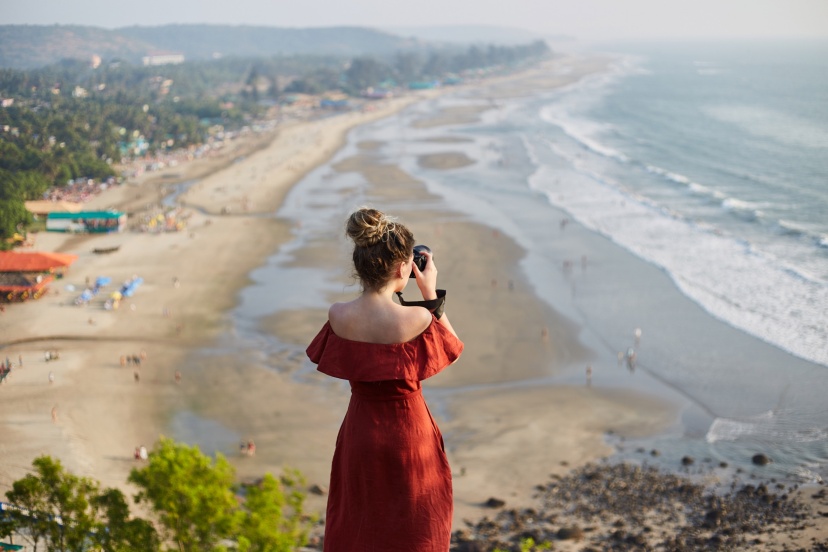Beach Photography: Capturing the Essence of the Shore
Introduction
As a beach photography enthusiast, I’ve come to appreciate the unique challenges and breathtaking opportunities that shooting by the seaside offers. The combination of sun, sand, and surf provides a canvas for creativity and a chance to capture stunning moments. In this article, I’ll share my insights, techniques, and photo gear recommendations to help you take your beach photography to the next level.
Essential Gear
To achieve remarkable beach photographs, having the right gear is crucial. Start with a sturdy DSLR or mirrorless camera that can handle the sandy and salty conditions. Invest in a wide-angle lens to capture the vastness of the beach and a telephoto lens for close-ups of people or wildlife. Don’t forget lens filters to control light and reduce glare, and a tripod for stability in low-light situations.
Lighting Techniques
Beach photography presents unique lighting challenges, such as intense sunlight, harsh shadows, and glare from the water. To overcome these challenges, consider using a lens hood to reduce lens flare, shoot in RAW format for better post-processing flexibility, and use a fill flash to balance the exposure. Be mindful of your positioning and timing to avoid unflattering shadows and blown-out highlights.
Composition Tips for Beach Photography
Composition plays a vital role in creating visually captivating beach photographs. Experiment with the rule of thirds, leading lines, and foreground interest to add depth and interest to your images. Incorporate elements like shells, footprints, or beach grass to provide context and a sense of place. Balance the elements in your frame to create a harmonious composition that draws the viewer’s eye.
Capturing Water Motion
The beach is synonymous with water activities, making it an ideal setting for capturing action shots. Freeze the motion of surfers catching waves, kiteboarders soaring through the air, or children playing in the shallows. Use a fast shutter speed to capture the action crisply, and consider panning techniques to convey a sense of movement. Don’t be afraid to get close to the action or experiment with different angles to capture dynamic shots.
Portraits on the Beach
People are an essential part of the beach experience. Whether it’s candid shots of friends and family or staged portraits, capturing genuine moments is key. Engage with your subjects, make them feel comfortable, and be discreet when shooting candid photos. Experiment with different focal lengths to create varied perspectives and try shooting at eye level for a more intimate connection.
Creative Perspectives
The beach is a treasure trove of seascapes and landscapes waiting to be captured. Explore different perspectives and angles to showcase the vastness of the ocean and the textures of the coastline. Experiment with long exposure photography to create dreamy effects with crashing waves or capture the movement of clouds. Look for interesting rock formations, tide pools, or sand dunes to add unique elements to your compositions.
Dealing with Weather
Weather conditions at the beach can be unpredictable. Sunrises and sunsets are magical moments at the beach, offering dramatic lighting and vibrant colors. When photographing these awe-inspiring events, use the changing light to your advantage. Experiment with exposure settings to capture the full dynamic range, from the warm glow of the sun to the soft hues of the sky. Include silhouettes of people or objects for added interest and storytelling.
Editing and Enhancing
Post-processing is a crucial step in bringing out the best in your beach photographs. Use editing software like Adobe Lightroom or Capture One to enhance colors, adjust exposure, and fine-tune the details. Don’t overdo it; aim for a natural look that retains the essence of the beach environment. Experiment with creative editing techniques to add your artistic touch while staying true to the scene you captured.
Sharing and Showcasing
After capturing stunning beach photographs, it’s time to share them with the world. Utilize social media platforms like Instagram, Flickr, or 500px to showcase your work and connect with fellow beach photography enthusiasts. Engage with the photography community by participating in contests or seeking feedback. Consider printing and framing your best shots to exhibit them in galleries or sell them as artwork.
Beach Photography Projects
Looking for creative projects to challenge and inspire you? To keep your beach photography fresh and inspiring, seek out new locations, perspectives, and subjects. Explore different beaches, both well-known and hidden gems, to discover unique opportunities. Follow other beach photographers for inspiration and learn from their techniques. Take the time to observe and immerse yourself in the beach environment to unlock your creativity and capture compelling moments.
Safety and Environmental Considerations
Photographing the beach comes with certain safety considerations and environmental responsibilities. The beach can be a challenging environment for your photography gear. Protect your equipment from sand, saltwater, and strong winds by using a waterproof camera bag or a dedicated protective cover. Clean your gear thoroughly after each beach session to prevent damage. Additionally, prioritize your safety by being aware of tides, weather conditions, and potential hazards while photographing on the beach.
Conclusion
Beach photography is a captivating and rewarding genre that allows you to preserve the beauty and essence of coastal environments. By understanding the unique challenges and applying the tips and techniques shared in this article, you’ll be well-equipped to capture stunning beach photographs. Remember to embrace the beauty of natural light, experiment with composition, and let your creativity guide you. Get out there, explore the sandy shores, and create images that transport viewers to the serene and captivating world of the beach.
Beach Photography FAQs
Q1: What camera settings are ideal for beach photography?
When shooting at the beach, it’s recommended to use a low ISO setting (around 100-200) for optimal image quality. Set your aperture between f/8 and f/16 to achieve a wide depth of field. Adjust your shutter speed based on the desired effect – faster for freezing motion, slower for capturing the movement of waves.
Q2: How can I deal with harsh sunlight at the beach?
Harsh sunlight can create harsh shadows and overexposed areas in your photos. To overcome this, shoot during the golden hours (early morning or late afternoon) when the light is softer. Use a lens hood or your hand to block direct sunlight and create more even lighting. Consider using a polarizing filter to reduce glare and enhance colors.
Q3: How can I create a sense of depth in my beach photos?
To create a sense of depth, incorporate elements in the foreground, such as rocks, seashells, or beach grass. Utilize leading lines, such as a shoreline or a pier, to draw the viewer’s eye into the frame. Experiment with different focal lengths to emphasize the distance between the foreground and the background.
Q4: Are there any specific rules or regulations regarding beach photography?
The rules and regulations regarding beach photography may vary depending on the location. It’s important to respect the privacy of individuals and abide by any posted signs or guidelines. Always seek permission when photographing people, especially in intimate or private moments. Be mindful of any restrictions on drones or tripods and ensure you follow beach safety guidelines.
Q5: What are some common mistakes to avoid in beach photography?
Some common mistakes in beach photography include not protecting your gear from sand and water, forgetting to clean your lens, and failing to account for changing tides and potential hazards. Avoid overexposing the sky or underexposing the shadows by using the appropriate exposure compensation. Remember to take your time and compose your shots carefully, avoiding cluttered backgrounds or distracting elements.
Further reading
Check out our other relevant articles:
.




